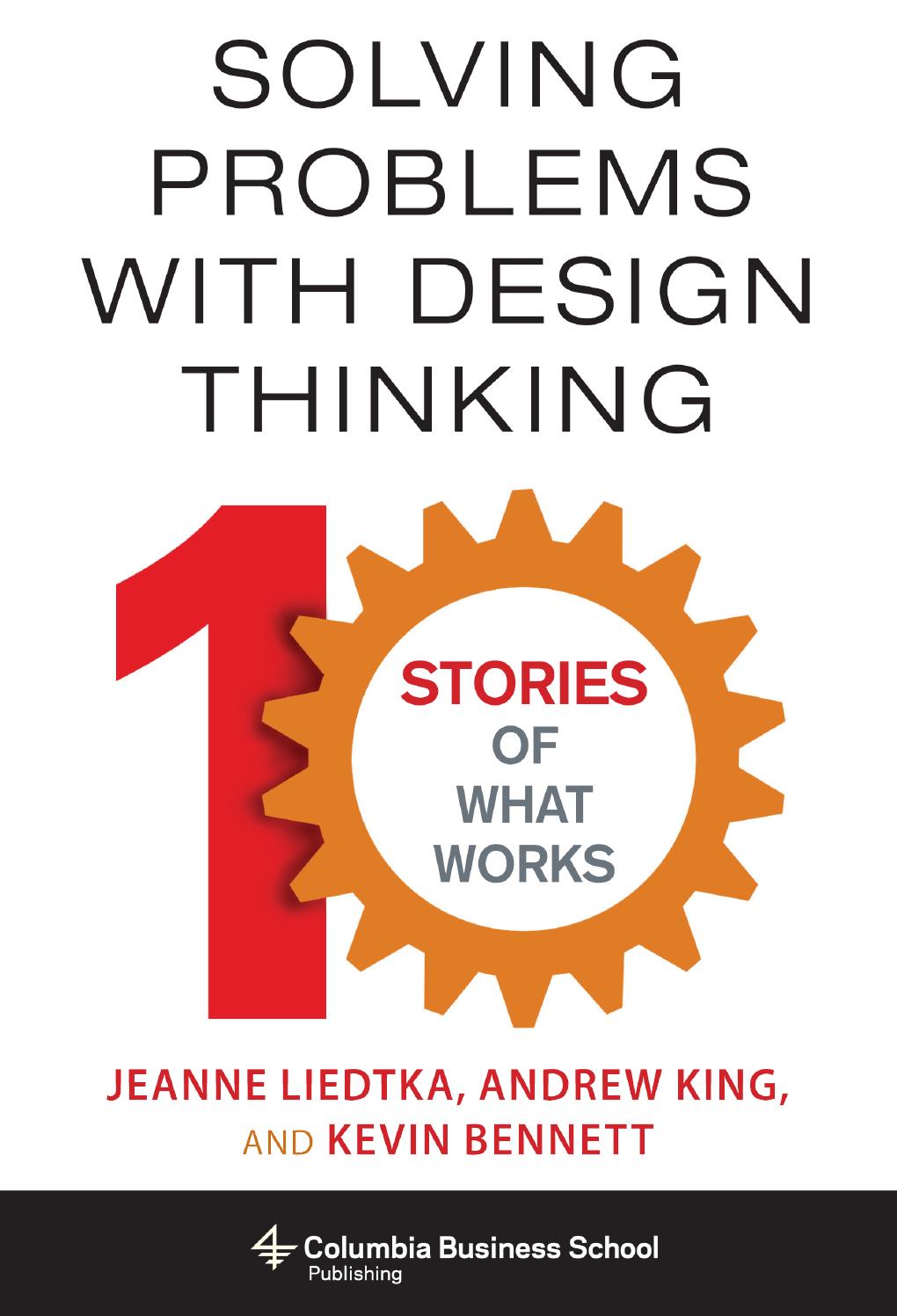Books
Design Thinking for the Greater Good: Innovation in the Social Sector
Facing especially wicked problems, social sector organizations are searching for powerful new methods to understand and address them. Design Thinking for the Greater Good goes in depth on both the how of using new tools and the why. As a way to reframe problems, ideate solutions, and iterate toward better answers, design thinking is already well established in the commercial world. Through ten stories of struggles and successes in fields like health care, education, agriculture, transportation, social services, and security, the authors show how collaborative creativity can shake up even the most entrenched bureaucracies—and provide a practical roadmap for readers to implement these tools.
Designing for Growth: A Design Thinking Tool Kit for Managers
Jeanne Liedtka and Tim Ogilvie educate readers in one of the hottest trends in business: "design thinking," or the ability to turn abstract ideas into practical applications for maximal business growth. Liedtka and Ogilvie cover the mind-set, techniques, and vocabulary of design thinking, unpack the mysterious connection between design and growth, and teach managers in a straightforward way how to exploit design's exciting potential.
Exemplified by Apple and the success of its elegant products and cultivated by high-profile design firms such as IDEO, design thinking unlocks creative right-brain capabilities to solve a range of problems. This approach has become a necessary component of successful business practice, helping managers turn abstract concepts into everyday tools that grow business while minimizing risk.
The Designing for Growth Field Book: A Step-by-Step Project Guide
In Designing for Growth: A Design Thinking Tool Kit for Managers (D4G), Jeanne Liedtka and Tim Ogilvie showed how design can boost innovation and drive growth. In this companion guide, also suitable as a stand-alone project workbook, the authors provide a step-by-step framework for applying the D4G toolkit and process to a particular project, systematically explaining how to address the four key questions of their design thinking approach.
The field book maps the flow of the design process within the context of a specific project and reminds readers of key D4G takeaways as they work. The text helps readers identify an opportunity, draft a design brief, conduct research, establish design criteria, brainstorm, develop concepts, create napkin pitches, make prototypes, solicit feedback from stakeholders, and run learning launches. The workbook demystifies tools that have traditionally been the domain of designers―from direct observation to journey mapping, storytelling, and storyboarding―that power the design thinking process and help businesses align around a project to realize its full potential.
Solving Problems with Design Thinking: Ten Stories of What Works
Design-oriented firms such as Apple and IDEO have demonstrated how design thinking can affect business results. However, most managers lack a sense of how to use this new approach for issues other than product development and sales growth. Solving Problems with Design Thinking details ten real-world examples of managers who successfully applied design methods at 3M, Toyota, IBM, Intuit, and SAP; entrepreneurial start-ups such as MeYou Health; and government and social sector organizations, including the City of Dublin and Denmark's The Good Kitchen.
Using design skills such as ethnography, visualization, storytelling, and experimentation, these managers produced innovative solutions to such problems as implementing strategy, supporting a sales force, redesigning internal processes, feeding the elderly, and engaging citizens. They elaborate on the challenges they faced and the processes and tools they used, providing a clear path to implementation based on the principles and practices laid out in Jeanne Liedtka and Tim Ogilvie's Designing for Growth: A Design Thinking Tool Kit for Managers.
The Physics of Business Growth: Mindsets, System, and Processes
Organic business growth is governed by its own natural laws―underlying truths that set the stage for growth and innovation, much in the way that Einstein's law of relativity accounts for the movement of objects in the space-time continuum. The most fundamental law is that uncertainty is the only certainty. Dominating forces are ambiguity and change; the processes at work involve exploration, invention, and experimentation. Unfortunately, these truths run counter to the principles of stability, predictability, and linearity that have long informed the design of our firms.
The Physics of Business Growth helps readers understand how to create growth in today's business environment, providing them a roadmap and a set of practical tools to navigate its challenges. The book lays out a three step formula that will prove invaluable to professionals who have the opportunity to influence growth now, as well as to tomorrow's growth leaders, guiding them in (1) creating the right employee and organizational mindsets to enable growth (2) building an internal corporate growth system, and (3) putting in place processes that result in identifying opportunities, launching growth experiments, and managing a growth portfolio.
The Catalyst: How You Can Become an Extraordinary Growth Leader
The Catalyst speaks to all managers who have ever been handed ambitious growth targets but little guidance on how to hit them. Managers like you who, year in and year out, face “the terror of the plug.” The boss expects you to deliver a daunting revenue target but offers little advice on how to get there. Even worse is “growth gridlock,” when your company won’t support your great ideas until you prove they’re good–which is impossible since you can’t get the proof until you’ve tried them out first. Stuck between a rock and a hard place, you spend your time persuading with PowerPoint presentations instead of pursuing opportunities.
What does it take to overcome such seemingly insurmountable roadblocks? How can you crack the code to discover and pursue new opportunities? How can smart organizations recruit growth leaders, train them, and learn from them instead of getting in their way? These are the questions explored in The Catalyst. Based on years of research, this inspiring book reveals that the most potent drivers of growth are unsung heroes who often go unnoticed: ordinary middle managers who do extraordinary things.





